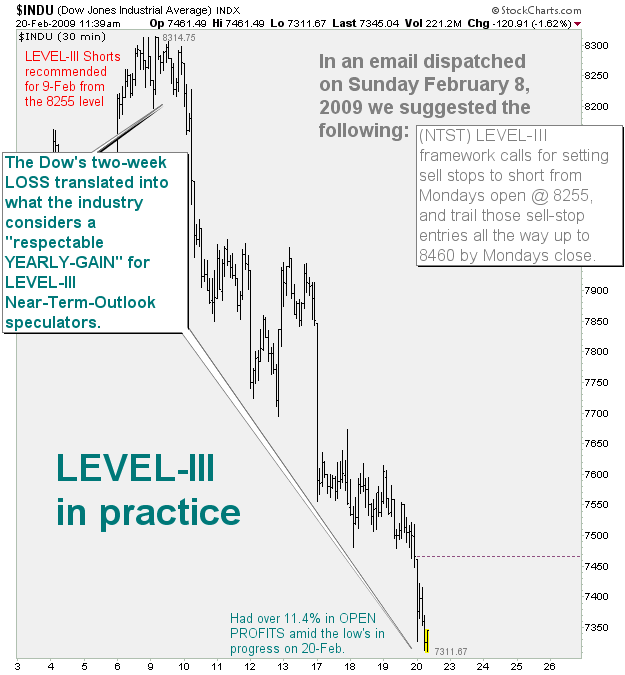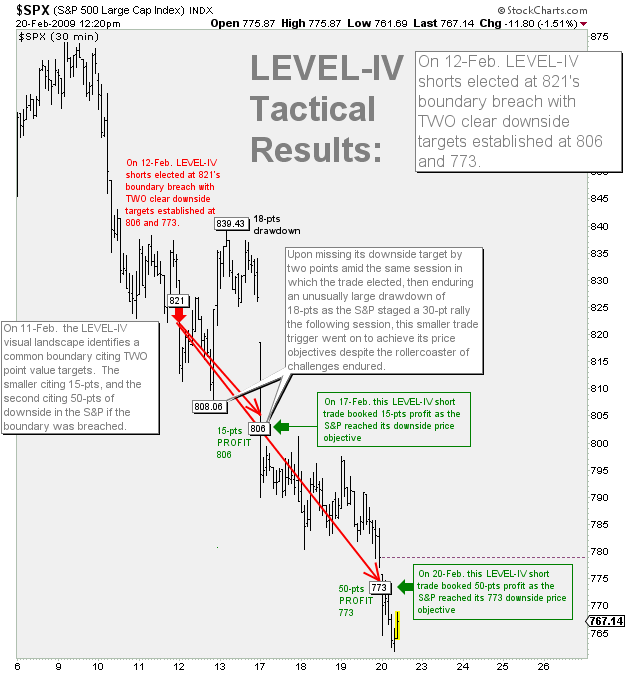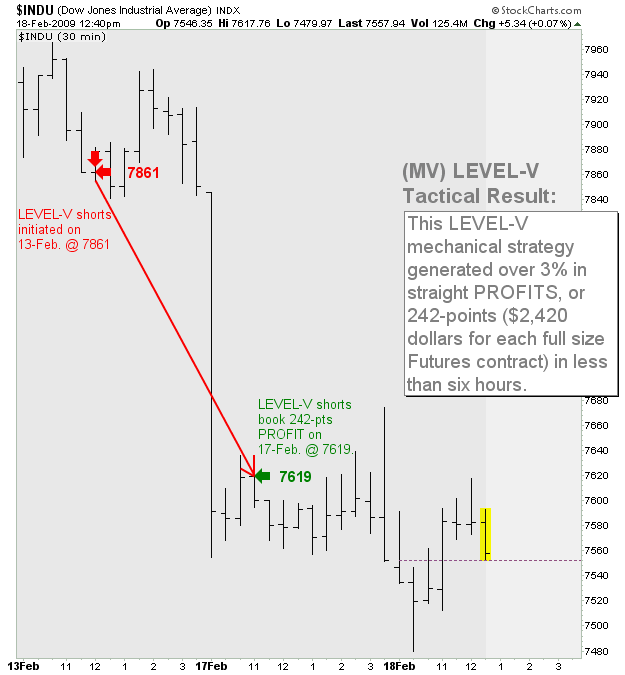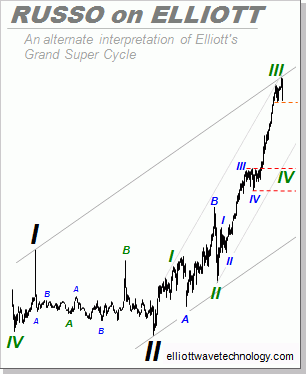Speculation: Investing, Hedging and Trading
Stock-Markets / Stock Index Trading Feb 21, 2009 - 08:33 AM GMTBy: Joseph_Russo

 One man's loss …is another man's gain - Commonly referred to by mass media and better known in the financial industry's perpetual variation of sales-pitches as “investing for the long haul”, prudent SPECULATION on a trade-by-trade basis - regardless of time horizon, is indeed a zero sum game.
One man's loss …is another man's gain - Commonly referred to by mass media and better known in the financial industry's perpetual variation of sales-pitches as “investing for the long haul”, prudent SPECULATION on a trade-by-trade basis - regardless of time horizon, is indeed a zero sum game.
Exceptions
Perhaps there is one exception residing amid a grand strategy of core positions. Such exception utilizes hedging tactics whereby the same account holder, expressing his or her largest opinion on a market at one level, is free to deploy smaller opposing hedge positions concurrently in a separate account.
Engaging both sides of the market
At first, it would appear that such a strategy was in effect trading against itself. After all, why not just maintain one big opinion and stick with that? The short answer is assurance. If one suddenly finds oneself in the fortunate position of being substantially “right” in their largest market expression, it is then prudent for one to protect and assure that expression with due diligence. We refer to these larger-tiered expressions of market opinion as Level-I, and Level-II engagement.
Zero Sum vs. the Market
Hedging or trading smaller positions around one's larger expression serves to assure and enhance profitability while reducing overall exposure to risk. Despite such prudent tactics, on a stand-alone basis, each individual trade vs. “the market” nonetheless remains a zero sum transaction.
Ordered Operations
With core positions clearly defined, protected, and assured, one may then opt to engage in the purity of organic speculative endeavor. Generally taken in proportionately smaller “size”, amid shorter durations, these ancillary trading strategies are pure short-term speculative plays. By design, such operations carry immediate levels of zero-sum risk vs. the market.
Enhance or Destroy
Contingent upon leverage used together with money management considerations, such efforts can smartly enhance or completely destroy the efficiencies enjoyed in Level-I and Level-II accounts. As such, if one attempts to orchestrate speculative enhancement strategy around larger core and hedged positions, they should be certain to attain sound navigational guidance prior to engaging at such levels.
Pure Speculation
We categorize Levels-III, IV, and V as purely speculative and ancillary trading operations. Yes, one may execute these strategies on their own; however, it is preferable that one first have the balance of their longer-term speculative house in order prior to allocating a suitably proportionate percentage of funds toward pure speculation.
Clean House
In bringing one's financial house to such order, we suggest one should first include a continually rebalanced portion of physical gold/silver as a percentage of one's dynamic net worth. Doing so provides an additional and critically essential level of assurance to one's overall financial well being.
Embracing the nature of the beast
If one then elects to engage in pure speculative plays, we suggest doing so methodically, with discipline and resolve. Prior to embarking upon such a journey, one must fully embrace all of the protocol disciplines inherent in whatever strategy might be under consideration. One must also be cognizant that managed losses are part of any short-term speculative endeavor.
Risk
In our view, another item to consider is that short-term trading efforts will require tolerances more closely aligned with a 1:1 risk reward profile vs. the more commonly held 3:1 ratio. Holding to a strict 3:1 ratio profile in real world short-term trading operations will more often than not result in an extremely low win ratio and a high level of trades stopped-out shy of reaching such lofty goals.
Fair is Fair
Although 3:1 trade set-ups do occasionally present themselves and deliver the goods, market logic and balance suggests that if you are willing to extract $1000 in market profits that you should likewise be prepared to risk $1000 in kind. Demanding an unrealistic one-sided expectation of extracting $3000 for every $1000 risked, will likely result in serious disappointment, specifically with regard to shorter-term speculative efforts.
Though there are many sound tactics and strategies to choose from, we will now share a brief summary review of our very own Level-III, IV, and V trading operations.
LEVEL-III
The chart below represents our medium-term LEVEL-III swing-trade strategy. This strategy does not intend to capture movement at every pivot, but instead focuses on low-risk entries, protecting capital, and staying with a newly established trend for as long as such a trend persists. Note how LEVEL-III strategy protocol stays with trend despite sharp counter moves mid-way through the decline.

LEVEL-IV
The chart below represents our short-term Level-IV trigger strategy. This strategy does not specifically intend to trade with trends, but instead focuses on defining precise short-term entry levels with clearly defined point values and failure zones. One may also use this strategy with our daily or weekly charts for larger duration trades.
Note the immediate “near target capture” on the smaller trade followed by its huge relative drawdown, which marginally exceeded the number of profit points sought prior to eventually reaching its 806 objective.
In contrast, an 18-pt drawdown relative to the larger 773 objective citing 50 target points, translates in hindsight, to a near 3:1 risk/reward ratio.

LEVEL-V
The chart below represents our extremely short-term LEVEL-V counter-trend strategy. This strategy does not trade with large trends, but instead relies heavily upon trends lasting anywhere from one to three days. This mostly mechanical strategy focuses on defining areas from which to probe specific entry and reversal levels that maintain a constant long or short exposure to the immediate price action at hand.
The (MV) strategy illustrated below is the faster of two approaches designed to express a constant engagement on either side of the market.
Note that this “always in the market” mechanical approach will be heavily taxed with controlled losses amid sustained stretches of overbought/oversold extremes, general sideways short-term price action, and/or during extreme episodes of pronounced and sudden whipsaw reversals.

SUMMARY
In sum, we consider ourselves the “Simplicity Experts” of financial markets. Our organizational visual approach in chart presentation incorporates a disciplined impartial blend of technical best practices. This presentation framework enables us to translate, organize, and simplify the otherwise complex, overwhelming, tedious, and extraordinarily challenging tasks inherent throughout the entire speculative process. The result is our NEAR TERM OUTLOOK , a simple but comprehensive trading publication, which provides clients with prudently actionable speculative guidance amid all time horizons.
 Trade the Supercycle IV -Wave
Trade the Supercycle IV -Wave
To safely speculate on, and effectively trade the endless array of unfolding subdivisions forthcoming in SC-IV, one may subscribe to our premium technical publication.
The express focus of Elliott Wave Technology's Near Term Outlook is to help active traders anticipate price direction and amplitude of broad market indices over the short, intermediate, and long-term.
Communications ‘09: To more effectively convey dynamic trading conditions relevant to our technical publications; we have recently launched complimentary E-briefings for anyone interested in following our work. E-brief dispatches will summarize current market conditions and tactical trading postures across various time horizons and trading strategies. Those interested can obtain free-inclusion from the sign-up block on our homepage.
Trade Better / Invest Smarter...
By Joseph Russo
Chief Editor and Technical Analyst
Elliott Wave Technology
Email Author
Copyright © 2009 Elliott Wave Technology. All Rights Reserved.
Joseph Russo, presently the Publisher and Chief Market analyst for Elliott Wave Technology, has been studying Elliott Wave Theory, and the Technical Analysis of Financial Markets since 1991 and currently maintains active member status in the "Market Technicians Association." Joe continues to expand his body of knowledge through the MTA's accredited CMT program.
Joseph Russo Archive |
© 2005-2022 http://www.MarketOracle.co.uk - The Market Oracle is a FREE Daily Financial Markets Analysis & Forecasting online publication.


